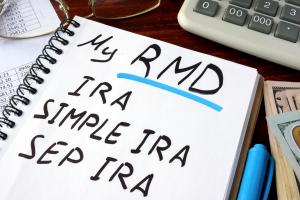
Benjamin Franklin famously said there are two things you can never avoid: death and taxes. While this statement is true, humans have created unique ways to defer these two inevitabilities. We have developed many habits to delay our eventual departure from this life; eating healthy, regular exercise, annual physicals, colonoscopies, etc. But when it comes to tax deferral there is still one technique that reigns supreme: The retirement account.
Retirement accounts come in many shapes and sizes but they all have the same basic function; the money that is contributed is done so on a pre-tax basis and the investment gains grow undisturbed by taxes until you make a withdrawal. Over a lifetime this can make a huge difference to the upside. But as this money accumulates, Uncle Sam is watching with keen interest. Afterall, a portion of the funds technically belongs to him. Therefore, the government has established rules around how long the money can stay in the account.
If you are 72 years or older and have a retirement account, like a 401(k) or traditional IRA, you must take what is known as a required minimum distribution each year. In your first year the amount is typically equal to 2 or 3% of the account balance. If you fail to take this distribution the penalty is steep, 50% in fact! That’s right, if you miss this crucial mandate by the IRS, you will forfeit half of the amount you were supposed to withdraw. But just because you must take a distribution from your retirement account does not mean you can’t keep most of that money invested if you don’t need it. Once you pay the tax owed on it you are free to do as you please, including reinvesting the money in a non-retirement account. This may be a wise move if you have an adequate emergency fund and already have enough income for the year to support your lifestyle.